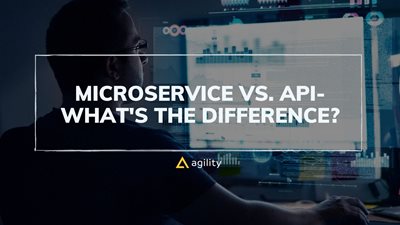Monitoring microservices (best practices and tools)


Monolithic and service-oriented architectures used to be the go-to ways of building software applications. However, these systems are difficult to monitor in their entirety because of how tightly bound together their components are.
Microservice architecture solves this problem. This new architecture gives teams the chance to monitor different components of an application individually and ensure that every part of the system is working as expected.
In this guide, you'll learn what microservices are, why you should monitor microservices, tips to monitor microservices successfully, and some tools to make this process easier and more accurate.
What are microservices?
Microservices are small, independent units of software that work together to deliver a complete application that performs a business function. This method of structuring, developing, and operating software applications as a collection of isolated but functional components is called microservices architecture.
Microservices are powered by container-based orchestration platforms. With this architecture, DevOps teams responsible for creating and maintaining applications can work on smaller units. This makes a project more manageable, and the resulting application will likely perform better and be more agile than monoliths and service-oriented architectures.
However, no matter how efficient a system is, the DevOps team will sometimes encounter problems or errors. Because of the multiple independent pieces within your microservice application, it can be challenging to determine the exact cause of errors after an application has launched. That's where microservice monitoring comes in.
Monitoring involves using tools to keep track of how your microservice environment is performing. You can use defined metrics and logs to monitor and track the behaviour and health of your microservices. This helps you get information about the performance of each microservice, confirm that your API transactions are available and functioning well, identify problematic transactions and endpoints, and improve customer experience.
Why is monitoring microservices important?
If there's one thing that's true in production, it's this: Systems fail. After working on production for quite some time, it's only natural for a DevOps team to prevent their efforts from going to waste. And since prevention is better than cure, what better way is there to prevent a total system failure than to watch closely for signs of one?
Here are four reasons why monitoring microservices is important:
Reduce (or prevent) system failure
Monitoring microservices helps you identify problems quickly so you can solve them. Failure to do so can cause a microservice to fail or malfunction, which can affect other microservices and result in the outage of the entire system.
DevOps teams can detect abnormalities, diagnose root causes, and take corrective measures before things get irreversibly bad by monitoring the individual microservices' health, interactions, and performance.
The insights you get from monitoring microservices can also help you optimize the system to reduce costs and increase output. You may even be able to predict any issues before they happen, which will help you prevent failures and deliver on the promises you make to your users.
Identify patterns that are hard to notice in monolithic apps
Monolithic applications have tightly coupled components, which make it hard to track everything that happens in them and isolate specific issues. This can cause you to miss crucial insights into the health of your system and how you can optimize its performance.
In a microservices architecture, however, each component operates independently, so you can monitor each service in isolation. This makes it easier to notice behavioural patterns and leverage them to improve your system's performance.
For example, tracking response time and error rates across microservices can reveal patterns of performance deterioration or service failures that may signal an incoming system crash.
Meet your microservice SLAs
Service Level Agreements (SLAs) are deals you make with your users about the quality of service they can expect from you. SLAs define clear expectations for response times, availability, and other metrics. Failing to meet your SLAs can result in a damaged reputation, lost revenue, and even legal repercussions with stakeholders.
However, monitoring your microservices' interactions and performance can help you comply with SLAs. You'll be able to gauge how well your system works and identify and resolve any performance bottlenecks before they negatively affect your ideal customers.
Optimize user experience
When you monitor your microservices, you better understand how your users view and interact with your application. While it's great to implement best practices and gamify features, an endpoint failure or memory leak can ruin all your development efforts. Worse still, you might not know it's happening, but your users will be having problems while using your app.
That's why you need to monitor your application from external sources to ensure that everything's working as it should. This will help you identify and troubleshoot any issues in order to quickly improve your app's user experience.
Best practices for Monitoring Microservices
As you monitor your microservices, here are some best practices you should keep in mind to get the best results:
Start slow
At the start of your monitoring process, focus on just a few services and metrics. This approach prevents you from getting overwhelmed with more data than you can handle.
Instead, it streamlines your entire monitoring process while giving you in-depth insights into your selected metrics and services. This makes it easier to find and resolve any performance issues. When you take things slow, you're establishing a baseline for your system's behaviour, so you can gradually monitor more microservices and metrics over time.
Pro tip: At the beginning, choose services that are easiest to change and aren't as important as others in your system. This way, if you get something wrong, you won't cause too much damage to your operations. This experience will also help you learn what—and what not—to do when you start monitoring important services and metrics.
Monitor what's inside the containers
Containers are isolated units of software that contain the elements needed to run in any environment. These containers are fast, flexible, and portable, allowing developers to easily work on and deploy software applications.
However, due to their internal structure, containers are like black boxes, making monitoring and troubleshooting more difficult. That's why DevOps teams need to monitor what's running inside the containers.
The traditional monitoring process of using an agent that runs in the host user space won't work well with containers because containers have minimal dependencies. Not to mention, adding monitoring agents to thousands of containers isn't the best use of resources.
To get around this, you can either instrument your code directly or implement a kernel-level instrumentation method that allows you to monitor all application activity on your host at once.
Monitor logs, metrics, and traces as one event stream
Logs, metrics, and traces are the three core aspects of observability. So to monitor microservices properly, you need to collect all relevant logs, metrics, and traces and combine them into one event stream for easier processing.
Not only will this data help you identify performance issues, but you'll also be able to pick up on patterns and trends that indicate when an issue might arise.
Take elasticity into consideration
Unlike monolithic architecture, change happens quickly in container-based environments. And a changing environment can make monitoring more difficult.
As elastic services grow and reduce, your microservice monitoring system and metrics should adjust accordingly. That's why choosing a monitoring system that prioritizes elasticity and is dynamic enough to accommodate the changes in containerized environments without human intervention is important.
Monitor your APIs
One of the most critical components of microservices architecture is the application programming interface (API). To ensure that your microservices are interacting properly with one another, you need to monitor the APIs that facilitate their interactions.
Regularly monitoring your APIs gives you a deep analysis of the health of each microservice and the application as a whole. This way, if your team finds a problem with the APIs, they can fix it before it starts a chain reaction that affects the entire system's performance.
Organizational structure
While most of the principles of monitoring microservices are technology-based, the teams building the system greatly impact how the application turns out. Just as a microservice architecture has loosely coupled components that make up the whole system, so should there be isolated teams that mimic this behaviour.
These small, decoupled teams should take responsibility for several parts of the system. The monitoring solution should also allow individual teams to set their own alerts, dashboards, and metrics while providing a bird's-eye view of the system that all teams can see.
Monitor your microservice-based application efficiently
Microservice architecture is one of the best systems to adopt when making modern applications. With microservices, developers can easily build complex applications through tiny, independent components. However, some components may not work as they should.
That’s why it’s important to monitor your microservices.
Using the right monitoring tools, you’ll be able to keep a close eye on each microservice and find out, in real time, when their performance declines or even fails. This gives you ample time to fix the problem(s) before it causes system-wide failure.
As you scale your microservice-based application, you need an equally scalable content management system (CMS) to manage your built-in pages.
Agility, a headless CMS built with microservice architecture, can help you do that. This tool has fast and flexible features that allow you to build and scale content solutions curated specifically for your business. This means you can add, remove, and tweak anything you want to without sacrificing the quality of your user experience.

About the Author
Agility CMS is Canada's original headless CMS platform. Since 2002, Agility has helped companies across Canada and around the world better manage their content. Marketers are free to create the content they want, when they want it. Developers are empowered to build what they want, how they want.
- Get a demo for a personalized walkthrough.
- Try for FREE and experience Agility CMS.
- Contact us with your questions.



